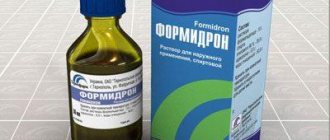Inflammation of bone tissue (ostitis) in its pure form almost never occurs. Much more often, inflammation involves the periosteum (periostitis) or bone marrow (osteomyelitis). The cause of osteitis is injury or infection.
Osteitis can be classified according to several characteristics:
1. Due to the occurrence
- Nonspecific osteitis. Occurs in most cases during injuries and bone surgeries
- Specific osteitis. It occurs as a result of infection of bone tissue by the bloodstream in tuberculosis, syphilis, and much less frequently in leprosy and other serious diseases. Usually the term “ostitis” refers to tuberculous bone lesions at the stage preceding tuberculous arthritis
2. According to the clinical course
- Acute osteitis. A violent inflammatory process leading to rapid bone destruction
- Chronic osteitis. A long-term inflammatory process with gradual growth of inflammation into neighboring tissues
3. By the nature of the discharge
- Aseptic osteitis
- Purulent osteitis
4. According to pathomorphological changes
- Rarefaction osteitis and condensing osteitis. They are stages of one sequential aseptic process, following one after another: osteoporosis (bone destruction) and osteosclerosis (bone hardening)
Features of the inflammatory process
When bacteria penetrate the bone, inflammation occurs, affecting the spongy bone tissue, periosteum and bone marrow. Sometimes the surrounding soft tissues are involved in the process, forming fistulas. If inflammation develops suddenly, within 2-3 days, its symptoms are pronounced, and the patient’s condition constantly worsens, they speak of acute osteomyelitis. With the slow development of an infectious lesion, a chronic form of the disease occurs.
In this case, the inflammatory process affects increasingly large areas of spongy bone tissue. Bone marrow necrosis often develops. Within a few days after the onset of the disease, ulcers form. Inflammation spreads to the periosteum and soft tissues. The infection spreads especially quickly in the bones of the thigh and leg. But if treatment was started on time, the inflammatory process can be stopped before bone destruction begins. Such a favorable outcome of the disease most often occurs in children and young people, in whom it can pass without a trace.
But sometimes necrosis of areas of bone tissue occurs. So-called sequesters are formed. These are areas of bone tissue that have separated from the bone due to purulent melting. They are surrounded by a purulent focus and do not resolve on their own, especially with age. The patient's condition worsens due to the fact that the purulent focus impairs blood circulation. And as a result, due to lack of nutrients, tissues die.
Features of chronic osteomyelitis
We can talk about the transition of an acute form of a disease to a chronic one when there is no effect of treatment within 1-1.5 months. The patient's condition may improve, but radiological signs indicate an ongoing process of bone destruction. In children, the chronic form most often develops after hematogenous osteomyelitis, as well as infection of the jaw bones. Adults mainly suffer from the post-traumatic form due to severe fractures, gunshot wounds or surgical interventions.
This course of the inflammatory process is the same for different types of disease. Chronic osteomyelitis is characterized by the presence of purulent fistulas, bone sequestration, as well as alternating phases of exacerbation and remission. If inflammation develops after injury or surgery, usually purulent fistulas and other signs are localized in the area of damage. Hematogenous osteomyelitis causes the spread of pus and damage to the bone along its entire length. Often inflammation also affects soft tissues and joints.
A feature of the chronic course of the disease is the alternation of periods of remission, when the patient feels well, and exacerbations. This change in phases of the inflammatory process can continue many times.
Causes of the disease
Bacteria can penetrate bone tissue in different ways. If there is an infection in the body, and through the bloodstream it enters the bone, causing its inflammation, this is an endogenous or internal route. Penetration of bacteria from the external environment is an exogenous route; it can occur due to injuries or purulent lesions of the surrounding soft tissues. Acute osteomyelitis can be caused by various microorganisms, most often by staphylococcus or streptococcus. But specific bacteria, for example, the causative agents of tuberculosis or pneumonia, can also cause inflammation in the bone.
The causes of osteomyelitis can be serious, such as trauma, burns, surgery, viral and bacterial infections, diabetes or cancer. The infection can also penetrate into the bone from a diseased tooth, with sinusitis or purulent sore throat. The disease often develops in people weakened by poor diet or chronic diseases. Osteomyelitis is often diagnosed in newborns. The infection penetrates into the bone tissue during childbirth, from the mother’s body, or through the umbilical wound.
Infection can spread to the bone from an infected wound
Causes and predisposing factors
Bacteria can penetrate bone tissue in different ways. If there is an infection in the body, and through the bloodstream it enters the bone, causing its inflammation, this is an endogenous or internal route. Penetration of bacteria from the external environment is an exogenous route; it can occur due to injuries or purulent lesions of the surrounding soft tissues.
The causes of osteomyelitis can be serious, such as trauma, burns, surgery, viral and bacterial infections, diabetes or cancer. The infection can also penetrate into the bone from a diseased tooth, with sinusitis or purulent sore throat. The disease often develops in people weakened by poor diet or chronic diseases.
Infection can spread to the bone from an infected wound
| Path of penetration | Causes | Which bacteria are more common? |
| Hematogenously (through the bloodstream) | Any chronic bacterial focus in the body: |
|
| In case of infection of surrounding tissues |
|
|
| Post-traumatic (in the presence of bone damage) |
| Mixed flora of environmental and skin microbes (more staphylococci) |
| Complication of surgery |
| As a rule, these are hospital microbes resistant to treatment (multidrug-resistant cocci, Proteus, rarely - Pseudomonas aeruginosa) |
The etiology and pathogenesis of osteomyelitis is complex and insufficiently studied. The first indications of the infectious nature of the disease appeared only in the middle of the 19th century. At the same time, attention was focused only on inflammation of the bone marrow, which gave rise to calling the disease osteomyelitis.
In the second half of the century, it was possible to prove the leading role of pyogenic (pus-secreting) bacteria and substantiate the pathogenesis of hematogenous inflammation.
For the disease to develop, the pathogen must penetrate the bone marrow. This can happen in different ways: through blood, after injury, surgery or a gunshot wound, or from surrounding tissue.
Today doctors have identified the following causes of osteomyelitis:
- any infectious focus in the body (acute tonsillitis, caries, sinusitis);
- furunculosis, single carbuncles;
- chronic pyelonephritis;
- tuberculosis;
- open wounds and fractures;
- bacterial myositis;
- joint replacement;
- osteosynthesis.
The reasons considered do not always give rise to inflammation of the bone marrow. As a rule, the development of osteomyelitis requires certain predisposing factors that weaken the body:
- poor immunity;
- exposure to radiation;
- prolonged stress;
- hormone therapy;
- foci of chronic infection.
And even these factors are not enough for the onset of the disease. Signals for the occurrence of osteomyelitis are frostbite, trauma, burns, acute respiratory viral infections, inadequate response to stress, and overwork.
The chronic form of the disease develops if the patient or doctor does not respond to an acute infection in a timely manner.
Risk factors
Infectious diseases, as well as traumatic lesions of bones and soft tissues, are common, but not everyone develops osteomyelitis. This depends on the general state of health, especially the activity of the circulatory system. Most often, this disease affects weakened patients with low body weight, women on diets, the elderly, children and men who are often exposed to injury.
Risk factors include the following conditions:
- smoking, drinking alcohol and drugs;
- vascular atherosclerosis, venous insufficiency, varicose veins;
- presence of diabetes mellitus;
- chronic kidney and liver diseases;
- weak immune system;
- severe fatigue;
- cancer diseases;
- irrational use of antibiotics;
- low physical activity;
- insufficient supply of nutrients.
Drug therapy
The main goal of treating osteomyelitis is to destroy the infection. This is best treated with medication. Various groups of drugs are prescribed. But to destroy the infection, which is the main goal of treatment, antibiotics are needed. First, you can start therapy with broad-spectrum drugs, then, after identifying the causative agent of the infection, special agents are prescribed. For osteomyelitis, the following drugs are especially effective: Cefazolin, Vancomycin, Fusidin, Kefzol, Linkamycin, Ceftriaxone, Co-Trimoxazole. Sometimes, in severe cases, a combination of two antibiotics is required. This therapy continues for at least a month, often even longer.
To eliminate the effects of intoxication and the consequences of antibiotic use, detoxification therapy is prescribed. This may be the administration of saline solution, washing the blood with Ringer's solution, Trisol or Normosol, as well as the use of diuretics.
Immunomodulators must be used in complex treatment. They are needed to strengthen the body's defenses and increase its resistance. This could be Timolin, Amiksin, Thymogen. It is important to restore the intestinal microflora, which will help strengthen the immune system. For this you can use Linex, Bifiform, Acipol, Hilak Forte and other drugs.
Physiotherapeutic methods help speed up recovery
Location of inflammation
The development of osteomyelitis is associated with the characteristics of blood circulation and nutrition of bone tissue. Most often, disruption of the venous outflow of blood and vascular damage occurs in the lower extremities. Therefore, the inflammatory process mainly affects the legs. The bones of the thigh or lower leg may be affected. In the upper extremities, the shoulder is most often affected. Slightly less commonly, osteomyelitis occurs in the ulna or radius, spine or jaw. The rarest places for the development of an infectious-inflammatory process are the bones of the ribs, or feet, sternum, fingers, shoulder blades or orbits.
Due to the peculiarities of blood circulation in the bones, the infection is often localized under the articular cartilage, forming epiphyseal osteomyelitis. After all, in these places the speed of blood flow slows down, so there is a greater possibility of necrosis developing. This is how, for example, osteomyelitis of the calcaneus appears.
If dental treatment is not done in a timely manner, osteomyelitis of the jaw may develop.
Causes
Most often, chronic osteomyelitis develops after the acute stage. The reasons for this are simple: the patient’s weakened immunity and improper treatment of the disease. It usually occurs 3-6 weeks after the onset of the inflammatory process. The patient's condition improves, but the infection in the bone remains. This happens for the following reasons:
- late treatment;
- incorrectly chosen antibiotics;
- failure by the patient to comply with all doctor’s instructions;
- errors during the operation;
- insufficient cleaning of the purulent focus.
Most often, osteomyelitis becomes chronic in children, elderly patients, and people weakened by other diseases. This is approximately 20-30% of patients. In other cases, even with the formation of sequestration and bone necrosis, the damaged areas are gradually replaced by healthy tissue.
Even with external improvement of the condition, the purulent process in the bone continues
Forms of osteomyelitis
Depending on which bacteria caused the development of the disease, osteomyelitis is divided into specific, for example, tuberculosis, or syphilitic, and nonspecific, which in 80% of cases is provoked by Staphylococcus aureus. In addition, types of disease are distinguished depending on the characteristics of the inflammatory process - acute and chronic osteomyelitis. This classification allows you to correctly diagnose the disease and prescribe the necessary treatment.
Bacteria enter the bone cavity in different ways. In each case there are some features in the development of the disease. Therefore, there is another classification of osteomyelitis:
- post-traumatic occurs after gunshot wounds, fractures, deep stab and cut wounds;
- postoperative develops due to operations on bones, the use of metal staples, screws or wires for the treatment of fractures, and wire osteomyelitis is often isolated as a separate type;
- contact occurs when inflammation spreads to the bone from soft tissues affected by infection;
- the hematogenous form of the disease develops when a purulent process is present in the body: phlegmon, abscess, boil, infected wounds, sinusitis or caries;
- There are also atypical types of the disease - Brody's abscess, albuminous and Garre's sclerosing osteomyelitis.
Due to the presence of infection in the body, a hematogenous form of osteomyelitis develops
There is also a local form of the disease, when the infection develops in one place, for example, in the coccyx area. Most often this happens when bacteria penetrate from the outside. Thus, with severe eye injuries, orbital osteomyelitis can develop. When the infection spreads through the bloodstream, a form of the disease develops when the infection affects several areas. Thus, osteomyelitis of the sternum can spread to the ribs or collarbones.
Chronic osteomyelitis
Most often, the disease begins acutely and only with an unfavorable course, in approximately 30% of cases it becomes chronic. But with some infectious diseases or with Garre's osteomyelitis, the disease immediately takes on this character. Therefore, sometimes it is not possible to make a correct diagnosis right away. The symptoms of osteomyelitis in the chronic form of the disease are not so pronounced, the pain becomes weak and aching, and there is little pus. Often this course of the disease is characterized by the formation of sequestration or fistulas. The patient's condition is usually satisfactory.
Remission can last from a month to several decades. And relapses occur due to infectious diseases, hypothermia or decreased immunity. In this case, the symptoms resemble the acute form of the disease. In most cases, the exacerbation subsides when the affected area can be cleared of pus.
Hematogenous osteomyelitis
If there is a source of infection in the body, microbes are carried through the blood to all organs. And the structure of tubular bones is such that there are many blood vessels in their middle part. Blood passing through the bone leaves some bacteria in its spongy substance. Basically, they remain dormant, but under favorable conditions they begin to multiply intensively. This is why osteomyelitis of the femur or shoulder develops so often. But in most cases, the hematogenous form develops in children. The cause of osteomyelitis in newborns may be infection during childbirth or bacteria acquired from the mother's body.
Osteomyelitis often develops after serious injuries with damage to soft tissues
Traumatic osteomyelitis
Due to the peculiarities of the blood circulation of tubular bones, after their fracture, post-traumatic osteomyelitis develops in more than 15% of cases. This complication can occur with a comminuted fracture, contamination of the wound due to injury, or severe damage to soft tissues. The risk of developing the disease increases with reduced immunity and vascular dysfunction. If the bone damage is caused by a gunshot wound, the symptoms of inflammation are not as severe. There is little pus, and the bone most often heals, despite the presence of infection. Osteomyelitis of the sternum has the most severe course and frequent complications, although such localization of the disease is rare.
Classification of osteomyelitis
| Form | Diagnosis criterion |
| Acute hemorrhagic |
|
| Subacute | The course of osteomyelitis is up to 4 weeks for any reason of development. |
| Chronic |
|
| Chronic multifocal |
|
| Unspecified | This is a temporary diagnosis that can only be made until the diagnosis is carried out. |
| Other chronic osteomyelitis (atypical) | Instrumental confirmation of atypical bone changes |
The type of bacteria that led to the development of the disease:
- Purulent (Proteus, Pseudomonas aeruginosa, streptostaphylococci);
- Anaerobic (Clostridial/non-clostridial);
- Specific (Tuberculosis/Brucellosis bacillus and so on).
Czerny-Mudder classification (type of bone lesion):
- Medullary (I) – damage predominantly to the bone marrow;
- Superficial (II) – the leading sign of this type is the pronounced destruction of the superficial (compact substance) layer of bone;
- Focal (III) – uniform damage to all layers of bone on one side (only part of the diameter). The support function is preserved;
- Diffuse (IV) – damage to the entire diameter of the bone, with loss of its stability.
The latter classification determines the location of the lesion. It can be one/several bones. Most often (72%) the long tubular bones of the extremities (tibia, humerus, etc.) are affected. The symptoms of the disease are largely determined by this moment.
The classification of osteomyelitis is very diverse and can be both international and Russian. Well, since there is no single generally accepted systematization, each doctor has the right to decide for himself what to use.
Modern medicine distinguishes two types of osteomyelitis, which have a direct impact on the severity of symptoms and the choice of therapy:
- acute process. It is divided into hematogenous, traumatic, gunshot and spreading to the bone from adjacent tissues;
- chronic illness. It can be atypical - Brodie's abscess, Ollier's syndrome and Garre's osteomyelitis. The pathogenesis of these inflammations is unknown, since the role of an infectious origin has not been confirmed. The secondary form develops after an acute process.
Depending on the route of infection, bone osteomyelitis is divided into:
- hematogenous. For a long time, its pathogenesis was explained only by its microbial nature, but the allergic theory significantly expanded the causes of inflammation;
- post-traumatic. Bone rotting is caused by an infection that enters the tissue during an open injury.
Based on etiological characteristics, osteomyelitis is divided into specific, resulting from exposure to agents of actinomycosis, syphilis or tuberculosis, and nonspecific, provoked by pyogenic microbes.
Symptoms of the disease
The danger of the disease is that in many cases its symptoms in the initial stages are similar to other infectious diseases. Therefore, when malaise, chills, fever and weakness appear, not all patients immediately consult a doctor. Only when local signs develop can acute osteomyelitis be suspected. Characteristic symptoms indicating this disease may be:
- pain localized in one place;
- decreased mobility;
- swelling and redness of the skin;
- presence of pus;
- limb deformity.
Chronic osteomyelitis, in addition, is also characterized by the presence of fistulas with purulent contents. All these symptoms can also occur with an abscess, phlegmon, erysipelas or injury. Therefore, it is very important to make a correct diagnosis, which will help avoid complications.
When local signs of inflammation and fistula tracts appear, the disease can no longer be confused with anything else
Relapses of the disease
The often relapsing course of the disease lasts for many years. An exacerbation can occur at any time against the background of relative well-being. It is provoked by hypothermia, viral diseases, decreased immunity, bad habits, injuries and increased physical activity on the affected limbs. The fistula closes and pus accumulates in the bone cavity.
The relapse begins acutely: the temperature rises, symptoms of intoxication increase, the patient feels weakness, headache, chills. The affected area swells and turns red due to the accumulation of pus, and severe pain appears. The exacerbation subsides only when the purulent contents of the fistulas come out.
Due to untimely treatment, serious deformation of the limb may occur.
Diagnosis of the disease
Acute osteomyelitis is treated in the surgical department of the hospital. If a bone infection is suspected, the patient is prescribed an examination. It necessarily includes blood and urine tests, culture of purulent discharge from the wound, as well as hardware diagnostics. Infrared scanning is used to identify hidden foci of osteomyelitis.
X-rays in the initial stages of acute osteomyelitis often turn out to be uninformative, since serious changes in bone tissue do not occur immediately, but after 1-2 weeks. Therefore, it is best to perform computed tomography or magnetic resonance imaging for early diagnosis. This is the only way to assess the characteristics of bone damage and differentiate osteomyelitis from other diseases. An ultrasound examination is also often prescribed in order to identify the presence and amount of pus, and determine the condition of the vessels and periosteum.
Basic methods of treating the disease
Osteomyelitis is a serious disease that affects the entire body. Therefore, its treatment must be comprehensive. Only by influencing the source of inflammation using different methods can the infection be dealt with. Therefore, a set of measures is most often used, which includes:
- drug therapy;
- dietary nutrition;
- local treatment with ointments and antiseptic solutions;
- physiotherapeutic treatment;
- traditional methods;
- surgical intervention.
If conservative treatment does not help, surgery is used
If treatment is started in the first days of the disease, and its course is not severe, then it can be carried out at home. Chronic osteomyelitis is treated in the same way. But in most cases, patients must be in the trauma or surgical department of a hospital. Constant observation by a doctor and monitoring the effectiveness of treatment using hardware diagnostics will help, if necessary, adjust treatment and also avoid complications.
Treatment of osteomyelitis
This disease can only be treated in a hospital setting. The hematogenous form is in the surgical department, and post-traumatic osteomyelitis is in traumatology. After all, such patients often require cleansing of the wound from purulent contents and constant medical supervision. Treatment of osteomyelitis should be comprehensive. It is carried out using medications and local wound treatment. In some cases, sequestrectomy is required - removal of necrotic areas of bone.
The goal of therapy is to relieve pain, inflammation and intoxication of the body, increase immunity, and also destroy infection. Treatment is most often long-term, at least 20-30 days, and sometimes lasts for 2-3 months. During this period, it is advisable to immobilize the affected limb.
During treatment, it is important to ensure immobility of the injured limb and constant cleansing of the purulent focus.
Drug therapy
If you consult a doctor in a timely manner, sometimes conservative treatment methods are sufficient. First of all, antibacterial drugs are used. Since the disease is caused by a bacterial infection, it cannot be controlled without destroying the infection. Usually several drugs are prescribed at once, and treatment lasts at least a month.
The most effective antibiotics for osteomyelitis are broad-spectrum antibiotics - Lincomycin, Ceftriaxone, Gentamicin, Ciprofloxacin and others. In addition to taking these drugs orally, intraosseous infusion and washing of the source of infection are used.
With such long-term antibiotic therapy, the intestinal microflora is disrupted, so it is imperative to use probiotics and prebiotics. For the prevention of dysbacteriosis, Linex, Bifiform, Hilak Forte are best suited. It is also important to increase the body's defenses. This can be done with the help of immunotropic therapy or vitamin-mineral complexes.
Additionally, drugs are prescribed that improve blood circulation - Trental or Pentoxifylline. Sometimes antispasmodics are used to help improve vascular patency.
For post-traumatic osteomyelitis, local wound treatment is very important. It is necessary to clean the wound from pus, prevent the growth of bacteria and speed up healing. Bandages with dioxidine ointment or Levomekol, rinsing with Chlorhexidine or hydrogen peroxide are effective.
Physiotherapy
Electrophoresis, phonophoresis or magnetic therapy are mainly prescribed during the recovery period of the disease. They, like physical therapy, help restore limb mobility, strengthen muscles, improve blood supply and nutrition to affected tissues. But to cleanse the blood of toxins, plasmaphoresis or ultraviolet irradiation of the blood can be performed from the first day of treatment.
In the complex treatment of osteomyelitis, you can use folk remedies
Traditional methods of treatment
In addition to the therapy prescribed by a doctor, you can use traditional methods. They will help speed up recovery and avoid complications. It is best to use them when the legs are affected, for example, the tibia. There are several most effective recipes:
- lubricate the skin over the affected area with aloe juice;
- 30 pieces of chopped walnuts need to be poured with a liter of vodka and infused; this tincture should be used for compresses;
- and an infusion of the partitions of these nuts in water is taken orally, a tablespoon 3 times a day;
- tincture of buds and lilac flowers in vodka can be drunk 30-40 drops and used for compresses.
Surgery
Opening and cleaning foci of infection is a prerequisite for successful recovery. The fistulas are excised, then washed and drained. If there are dead skin areas, sequestrectomy is performed. Removal of the purulent focus is mandatory to prevent the spread of infection. The most difficult operation is performed for post-traumatic or gunshot osteomyelitis. In this case, in addition to pus, bone fragments and dead tissue are removed, and the appearance of the bone is restored.
Surgery is often required to remove pus and areas of necrotic bone
Diet
The patient's nutrition is very important for successful treatment. It should be complete and easily digestible. It is better to divide meals into small portions, but eat 5-6 times a day. The diet must include fresh vegetables and fruits, dairy products, lean meat, and eggs. It is especially important that more calcium, iron and protein enter the patient’s body with food.
Symptoms of osteomyelitis
The clinical picture of the disease is different and depends on the type of infection and the body’s resistance
- Acute purulent hematogenous osteomyelitis . The preliminary period of the disease is characterized by general malaise, aching limbs, headache and muscle pain. This is followed by chills with a rise in temperature to 39°C or higher. The tongue is dry, coated, weakness, sometimes vomiting, loss of consciousness, severe pain in the area of the affected bone, local increase in temperature, increasing swelling, dysfunction, swelling of the tissues in the affected area. After a few days, softening becomes apparent, the skin becomes stagnantly red, swollen, and nearby lymph nodes are enlarged. The abscess gradually comes out, empties, and the symptoms weaken. The mortality rate for this form is low (about 10-12%), since the body successfully copes with the infection.
- The most acute septic osteomyelitis . It occurs without warning, in the next few hours after injury, with a sharp jump in temperature to 40-41°C, severe chills, rapid loss of consciousness, enlarged liver and spleen (septicemia). Local processes often do not have time to develop before death occurs. Deaths occur in the first days of the disease in every third case. The cause of death is complications of the lungs, pleura, kidneys, liver, and brain. If the body copes with the peak of infection, then the course of the disease in the future is similar to the acute form.
- Epiphyseal childhood osteomyelitis . Young children get sick. It begins with restless behavior of the child when bathing, shifting, etc. The temperature rises to 39°C, swelling in the affected area and the nearest joint becomes noticeable. Limb mobility is limited. The course of the disease is usually benign, with complete recovery. Severe cases are characterized by the development of joint deformation, and sometimes death due to sepsis.
- Subacute hematogenous osteomyelitis develops against the background of satisfactory health, low temperature, and moderate pain at the site of the lesion. Local symptoms increase slowly. Complications and deaths are very rare and are associated with exacerbations. After 2-3 weeks, with the body’s proper reaction and optimal resistance, the acute symptoms subside, the temperature stabilizes or remains slightly elevated in the evening, the condition improves, and a fistula with purulent discharge remains. The swelling of the tissues subsides, and thickening of the affected bone becomes noticeable.
- Chronic sequential osteomyelitis in the absence of retention of pus occurs without fever, with or without pain at night. Possible pain due to weather changes. The soft tissues of the diseased area are swollen and compacted. The discharge of pus is not constant. When fistulas become scarred, retracted scars remain fused to the bone. During an exacerbation, the temperature rises, swelling and severe headache appear, i.e. the process of development of acute osteomyelitis is repeated with the formation of fistulas in new or old places. Such exacerbations are sometimes possible even after decades. One of the reasons for relapse of the disease may be previous operations.
- Primary chronic osteomyelitis . Similar to subacute, with low or normal temperature. Process development is slow. The patient complains of pain in the bones, noticeable thickening of the bone, and hardening of the soft tissues. Small ulcers near the surface against the background of sluggish tissue inflammation. After removal of the purulent focus (sequestrum), they often heal quickly, but new ones may form nearby.
Read also…. Osteoporosis - how to choose effective treatment
Treatment and prevention of osteomyelitis
Treatment of acute osteomyelitis is possible only in a hospital setting. Complex treatment is indicated: a course of antibiotics, surgery, restorative drugs with mandatory immobilization of the diseased limb. Highly effective antibiotics of the latest generation significantly reduce the need for surgical intervention.
There are radical and palliative operations and surgical interventions for the treatment of osteomyelitis. During radical operations, the purulent focus is removed with bone resection (contraindicated for children). During palliative operations, fistulas are excised and osteomyelitic phlegmons are opened.
Prevention of osteomyelitis consists in preventing contamination of even minor skin lesions and in timely and thorough treatment of wounds.
Complications of the disease
Osteomyelitis is a serious disease that disrupts the functioning of the entire body. The kidneys and liver, as well as the immune system, are especially affected. With untimely or poor-quality treatment of osteomyelitis, complications often develop. To prevent this, any inflammation should be treated under the supervision of a doctor. Otherwise, the infection can spread throughout the body or completely destroy bone tissue.
The most serious complications of the disease include:
- sepsis;
- anemia;
- severe kidney damage;
- abscess or cellulitis;
- arthritis;
- muscle and joint contractures;
- complete loss of joint mobility;
- malignant tumors.
Complications
Acute osteomyelitis is a very serious disease that has a lot of complications:
- Phlegmon.
- Abscess.
- Purulent inflammation of the joint, which is located directly above the site of bone destruction.
- Spontaneous fracture.
- Contractures.
- Ankylosis.
- Formation of malignant tumors.
- Sepsis.
- Anemia.
- Amyloidosis.
Recovery depends on the degree of damage and the extent of the process to the bone. With a chronic disease, recovery depends on many reasons, but the most important thing here is correct and timely treatment, as well as the age of the patient.
Prevention of bone inflammation
The most common type is hematogenous or post-traumatic osteomyelitis. Damage to bone tissue does not occur immediately; it is usually preceded by other infectious diseases or injuries. Therefore, if you take preventive measures, inflammation can be avoided. It is very important to immediately consult a doctor if symptoms of infection appear, to treat chronic diseases in a timely manner and to prevent the presence of foci of infection in the body, for example, caries.
To prevent traumatic osteomyelitis, you need to provide proper first aid immediately after the injury. If soft tissue is damaged or there is an open bone fracture, it is necessary to treat the wound with Chlorhexidine solution, lubricate its edges with brilliant green or iodine and apply a sterile napkin. The affected limb should be immobilized and ice may be applied to prevent swelling and relieve pain.
Infectious lesions of bone tissue are often not taken seriously by patients. But if treated incorrectly, osteomyelitis can lead to disability and even death. Therefore, you need to be more attentive to your health and consult a doctor at the first symptoms of inflammation.
Features of the purulent process in the bone
Osteomyelitis is one of the diseases that is very difficult to treat. This occurs due to the characteristics of the inflammatory process in bone tissue. When microorganisms multiply, the volume of bone marrow and spongy substance increases. This leads to compression of the blood vessels and disruption of the blood supply to the bone. Deprived of nutrition, large areas of bone tissue die, which creates favorable conditions for the proliferation of bacteria. Sometimes the purulent process affects nearby joints, muscles, ligaments and skin.
Another feature of osteomyelitis is that its causative agent is most often Staphylococcus aureus, which is very difficult to treat with antibiotics. Sometimes the causes of inflammation are hemolytic streptococcus, Escherichia coli or Pseudomonas aeruginosa. When treating, it is very important to identify the pathogen, otherwise incorrectly chosen antibiotics will lead to even greater bacterial resistance.
Pathogenic microorganisms are often present in the human body, but they are not always the cause of osteomyelitis. The seriousness of the disease and the complexity of its treatment are due to the fact that it occurs against the background of a weakened immune system, viral or other infectious diseases, diabetes mellitus, tumors, and pathological processes in internal organs. Therefore, osteomyelitis develops most often in weakened patients, elderly people or children.
The last feature of the disease that explains why it is difficult to cure is the difficulty in making a timely diagnosis. In the initial stages, bone inflammation shows almost no effect, especially if the infection has entered it from the inside through the bloodstream. Therefore, it happens that the patient does not consult a doctor on time, so the time required for successful treatment of osteomyelitis is lost - the inflammation becomes chronic. In addition, in some cases the disease develops rapidly: with high fever, severe pain, symptoms of intoxication, and disruption of the functioning of internal organs. Without medical care, this course of osteomyelitis can lead to the death of the patient.
Competent medical care and correct diagnosis are the main factors for successful treatment of the disease.
Physiotherapeutic treatment
After the patient’s condition has stabilized, the temperature has dropped and the pain has subsided, physiotherapeutic methods are prescribed. They are designed to stimulate blood circulation and tissue regeneration processes, prevent the development of contractures and restore limb mobility. First of all, this is physical therapy. You can start exercising shortly after your condition improves. But the affected limb can be loaded no earlier than 20 days after surgical treatment was performed.
Laser therapy for bone inflammation is now considered the most effective. In this case, special substances are introduced into the blood, which quickly penetrate into the purulent focus and linger there. After this, they are burned out by laser radiation along with the cells affected by the infection. This method is often used for osteomyelitis of the calcaneus.
Drug electrophoresis, UHF therapy, ultraviolet and ultrasound irradiation, mud applications, paraffin treatment, ozokerite and other methods are also effective for treatment.
Traditional methods of treatment
In the complex treatment of the disease, after consultation with a doctor, any methods can be used to alleviate the patient’s condition. Therefore, treatment of osteomyelitis with folk remedies is also often used. But it should not replace therapy prescribed by a doctor.
All traditional methods are used only as additional treatment:
- It is recommended to drink a tablespoon of fish oil and a raw home-made egg in the morning;
- pour 200 g of walnut partitions into 0.5 liters of vodka and leave for 2 weeks, then drink a tablespoon of the tincture three times a day;
- in the chronic course of the disease, you can apply compresses of chopped onions mixed with laundry soap to the affected area at night;
- for osteomyelitis of the foot, baths with ash from aspen logs are effective;
- an infusion of lilac flowers with vodka is used for compresses and drunk 2 drops per day;
- An application made from this dough draws out pus well and promotes wound healing: mix liquid honey, rye flour, butter and yolks;
- Wash wounds after traumatic osteomyelitis with juice from fresh nettle leaves or chamomile decoction;
- apply a paste of crushed aloe leaves, this will help cleanse the lesion from pus.
To prevent complications, it is important to remove pus from the osteomyelitic cavity in a timely manner.











